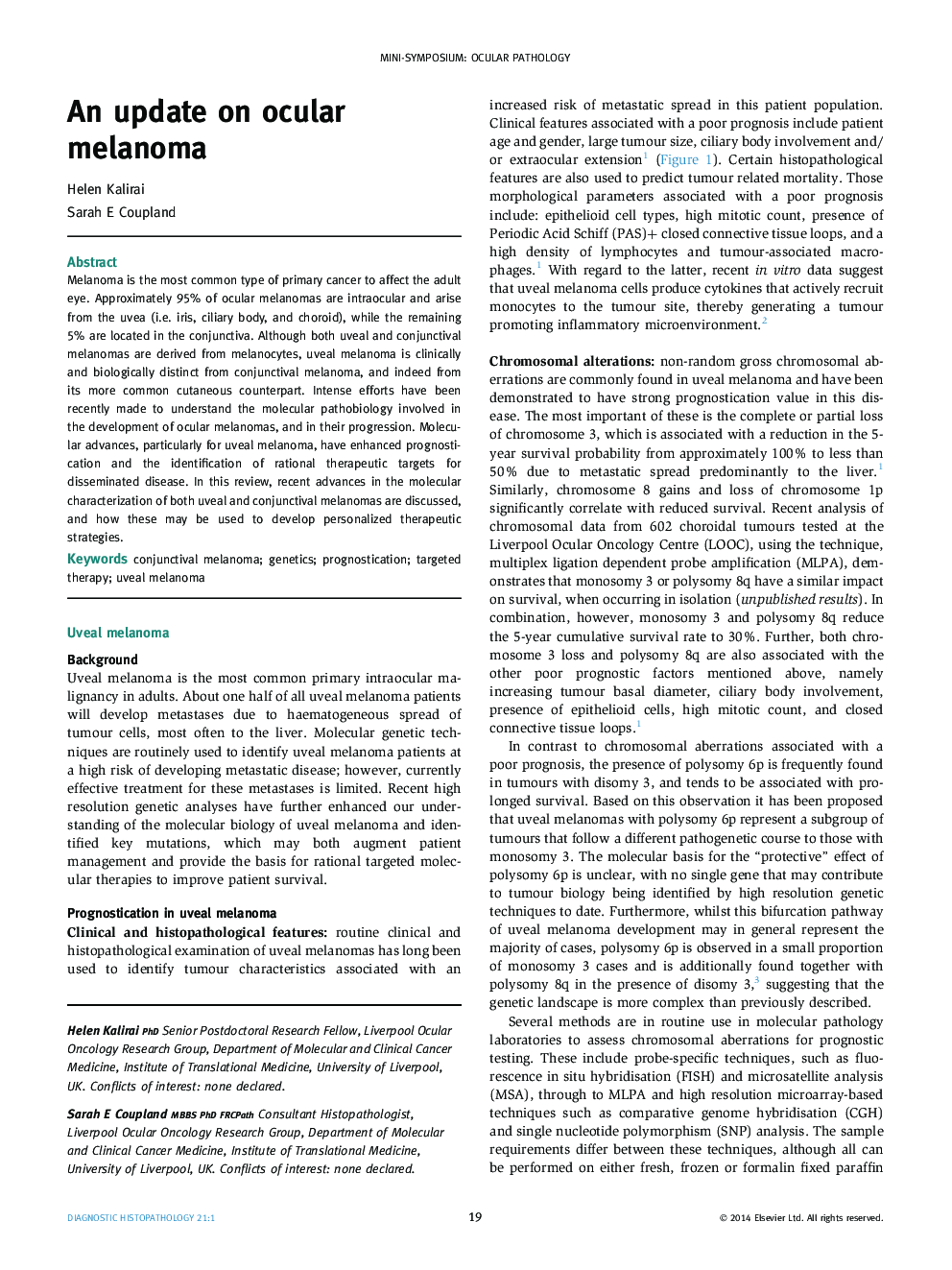| Article ID | Journal | Published Year | Pages | File Type |
|---|---|---|---|---|
| 4130979 | Diagnostic Histopathology | 2015 | 7 Pages |
Melanoma is the most common type of primary cancer to affect the adult eye. Approximately 95% of ocular melanomas are intraocular and arise from the uvea (i.e. iris, ciliary body, and choroid), while the remaining 5% are located in the conjunctiva. Although both uveal and conjunctival melanomas are derived from melanocytes, uveal melanoma is clinically and biologically distinct from conjunctival melanoma, and indeed from its more common cutaneous counterpart. Intense efforts have been recently made to understand the molecular pathobiology involved in the development of ocular melanomas, and in their progression. Molecular advances, particularly for uveal melanoma, have enhanced prognostication and the identification of rational therapeutic targets for disseminated disease. In this review, recent advances in the molecular characterization of both uveal and conjunctival melanomas are discussed, and how these may be used to develop personalized therapeutic strategies.
